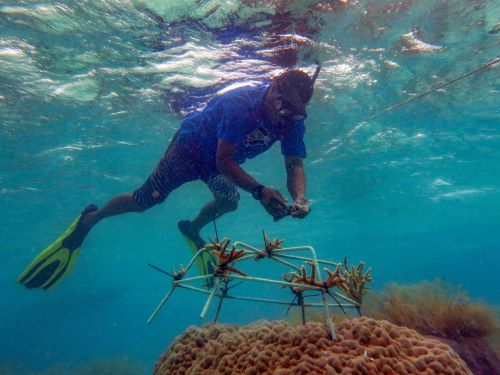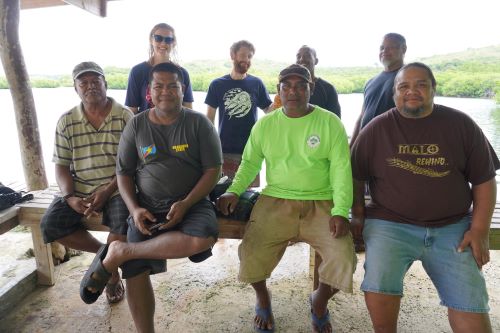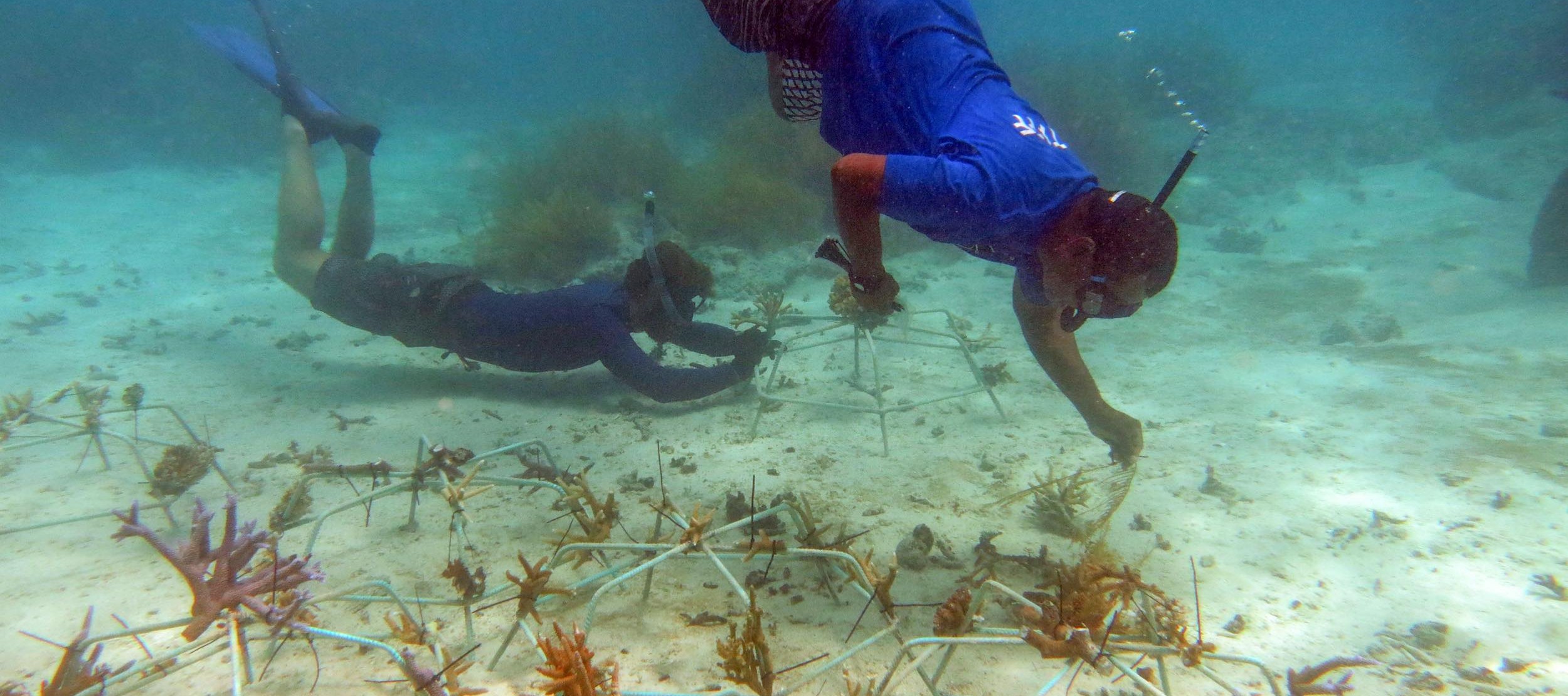- Research
PICRC’s coral restoration project and collaboration in Ngaraard continues
The team from the Palau Aquarium at the Palau International Coral Reef Center (PICRC) recently returned to Ngaraard State to continue with the coral restoration project. The patch reefs on the west side of the State were heavily damaged by typhoon Mike in 1990 and the reef still hasn’t recovered to its former beauty. This project was requested by the governor of Ngaraard to see if coral restoration would be appropriate and beneficial.
In October last year, the Aquarium team performed a site assessment of the closest patch reef to measure the coral community. The results showed a high degree of coral bleaching and a significantly lower number of branching corals inside the lagoon, compared to those further out. The team also recorded a high percentage of dead coral rubble on top of the patch reef. Two local rangers were trained in scientific monitoring methods to track the degree of bleaching across the following three months. According to the data collected, no bleaching was observed after mid-November. However, there was a significant decline in live coral cover on the patch reef.
On Friday, February 17th, the Aquarium team met with the local rangers in Ngaraard and returned to the reef to begin the coral restoration. It was decided that after a bleaching event was the best time to propagate the corals that remained healthy, as these have already displayed tolerance to increased ocean temperatures. “This is the first-time this method has been used for coral propagation in Palau,” said Aquarium Researcher, Daniel Cassidy. “It was developed and has been successful in Indonesia. Using a standardized method will allow us to compare the results with that study.”
The aquarium team used hexagonal structures, termed “spiders”, to attach loose coral fragments that were found tumbling across the coral rubble. These corals were used as they’re unlikely to survive without a solid foundation. The “spiders” are also coated in sand, to encourage natural coral settlement. Ten of these “spiders” were placed on the patch reef. The aquarium team will monitor these for the next three months to measure coral growth and survival. After three months, the team will assess if the project is successful and should be scaled-up, or if an alternative method is needed. This work would not be possible without the commitment and dedication of the state rangers and the governor of Ngaraard.

“Before typhoon Mike, these patch reefs were full of life with branching coral, fish, and plants,” said the state rangers. “We look forward to the day it will return to its former condition.”
“We’re treating this initial stage as a pilot project, with scope to further collaborate with the community. Over time, if the restoration is successful, we should see more life return to the area,” stated aquarium supervisor, Asap Bukurrou.
With predictions showing climate change will continue to intensify, causing increasing ocean temperatures, the group plans to see how these restored corals can build a more resilient local coral community.



